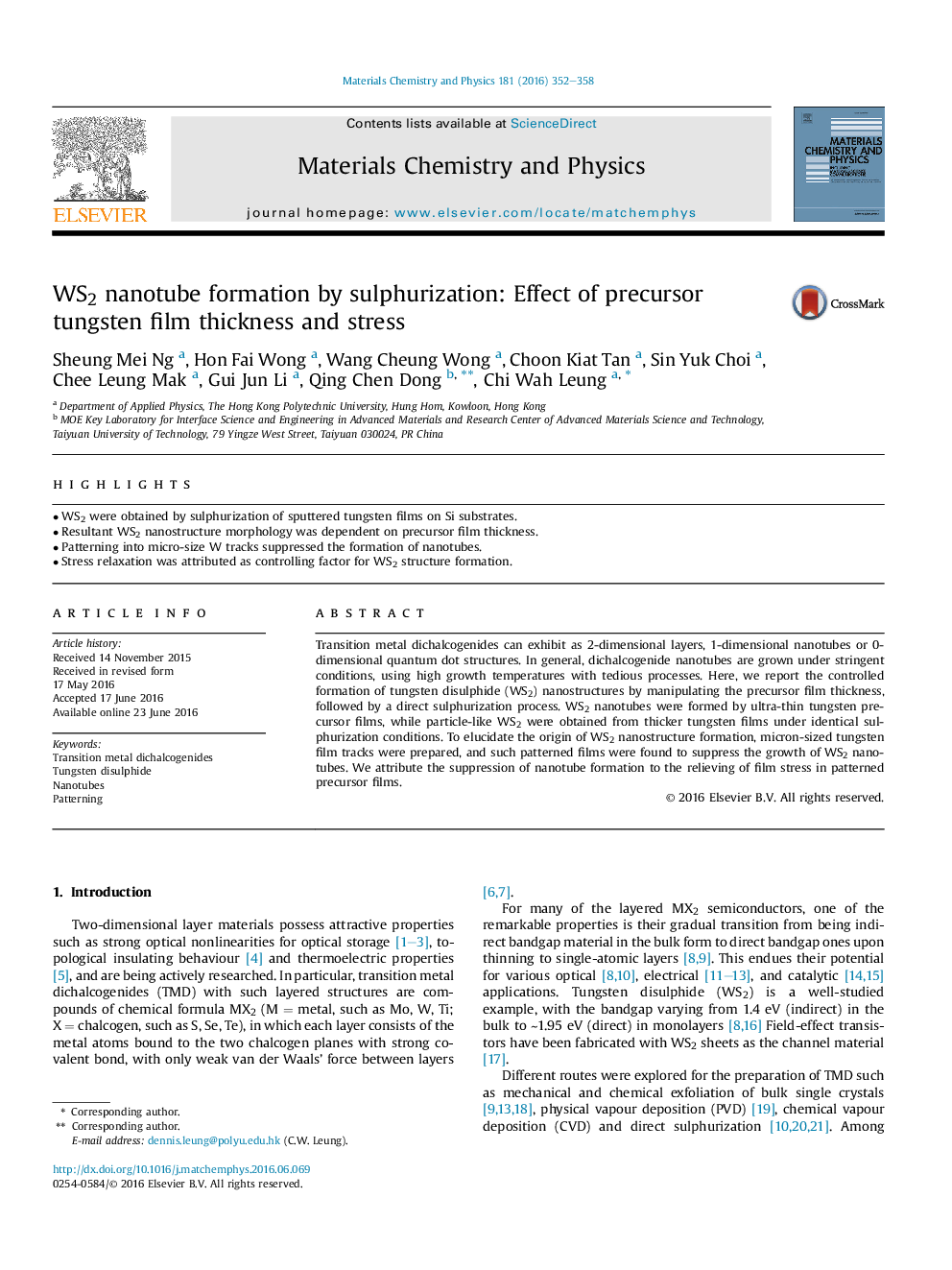| Article ID | Journal | Published Year | Pages | File Type |
|---|---|---|---|---|
| 1520474 | Materials Chemistry and Physics | 2016 | 7 Pages |
Abstract
Transition metal dichalcogenides can exhibit as 2-dimensional layers, 1-dimensional nanotubes or 0-dimensional quantum dot structures. In general, dichalcogenide nanotubes are grown under stringent conditions, using high growth temperatures with tedious processes. Here, we report the controlled formation of tungsten disulphide (WS2) nanostructures by manipulating the precursor film thickness, followed by a direct sulphurization process. WS2 nanotubes were formed by ultra-thin tungsten precursor films, while particle-like WS2 were obtained from thicker tungsten films under identical sulphurization conditions. To elucidate the origin of WS2 nanostructure formation, micron-sized tungsten film tracks were prepared, and such patterned films were found to suppress the growth of WS2 nanotubes. We attribute the suppression of nanotube formation to the relieving of film stress in patterned precursor films.
Related Topics
Physical Sciences and Engineering
Materials Science
Electronic, Optical and Magnetic Materials
Authors
Sheung Mei Ng, Hon Fai Wong, Wang Cheung Wong, Choon Kiat Tan, Sin Yuk Choi, Chee Leung Mak, Gui Jun Li, Qing Chen Dong, Chi Wah Leung,
